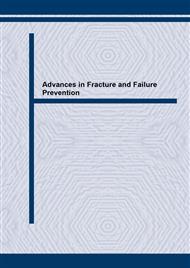p.1159
p.1169
p.1179
p.1185
p.1191
p.1197
p.1203
p.1209
p.1215
Effect of High Temperature Air-Exposure on Room Temperature Fatigue Crack Growth of Ni-Base Single Crystal Superalloy CMSX-10
Abstract:
Room temperature fatigue crack growth behaviour of un-exposed(as-received) and high temperature air-exposed(at 1100°C for 24 to 1000 h) CMSX-10 was investigated. A small compact tension specimen with [001] loading direction and [110] fatigue crack growth direction was used. The fatigue crack growth results were analyzed using a stress intensity parameter K . It is shown that the air-exposure has no deteriorative effect on the crack growth behaviour, even though the microstructure has changed by the exposure(coarsening of γ' ). The crystallographic facet fracture of (1-11) and (-111) planes appeared and the intersection of the planes forms sets of lines(ridge and valley) parallel to [110] direction. The fatigue crack tip front is schematically shown.
Info:
Periodical:
Pages:
1191-1196
Citation:
Online since:
April 2004
Authors:
Price:
Сopyright:
© 2004 Trans Tech Publications Ltd. All Rights Reserved
Share:
Citation:


